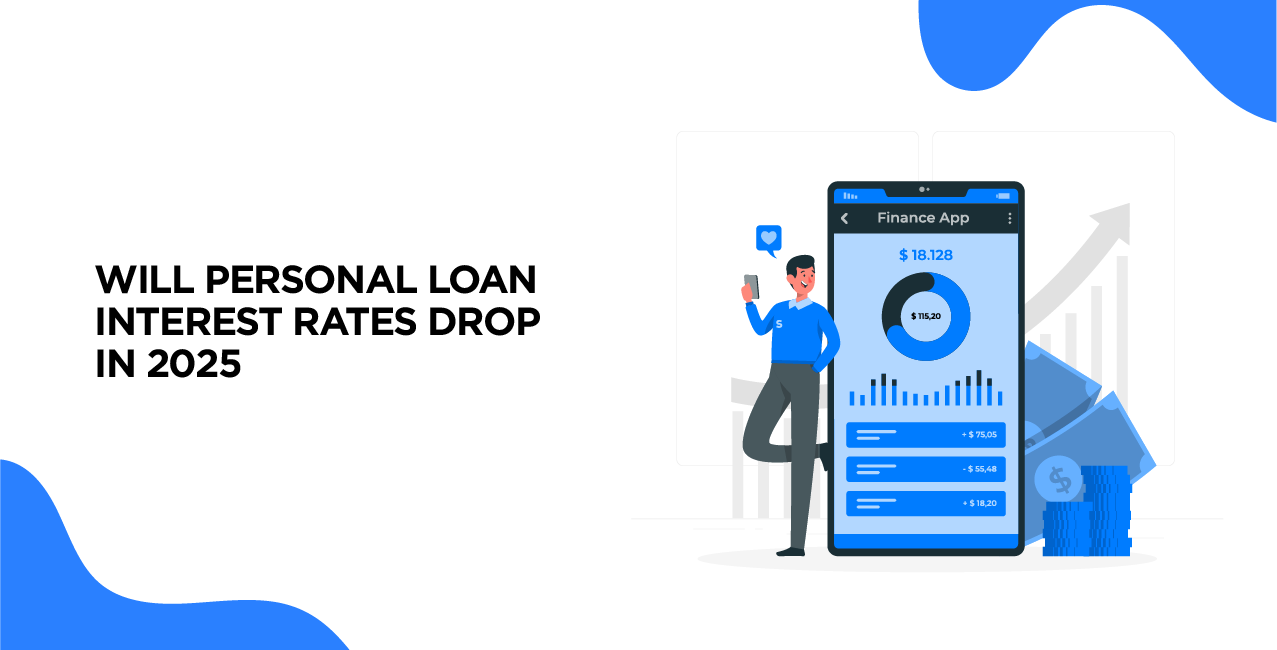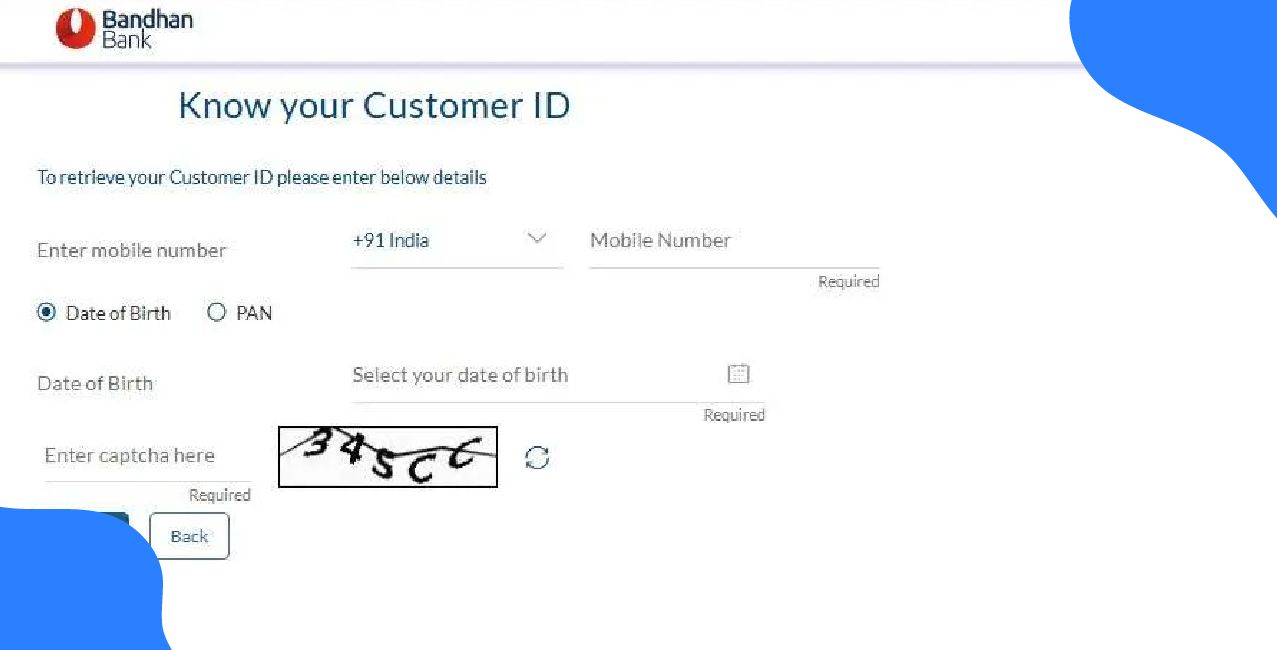
Author
LoansJagat Team
Read Time
8 Min
26 Mar 2025
Will Personal Loan Interest Rates Drop in 2025? Here’s What Experts Say!
Have you ever wanted to turn your kitchen like Mrs. Sharma’s? Or want to fund that once-in-a-lifetime Europe trip? Well, guess what? A personal loan has your back, from home renovation, travel, and medical emergencies to even a shopping spree.
But you have to repay it with interest. Because, let's be honest, nothing in life comes for free except unsolicited advice from relatives. And this is where most people get stuck: ‘Kitna interest lagega?’
Well, that depends on the year and prevailing economic conditions. To give you an idea of how things have changed over the years, refer to the given table:
Year | Average Personal Loan Interest Rate (%) |
2020 | 10–15% |
2022 | 10–14% |
2023 | 9–13% |
2024 | 9–12% |
Now, the big question is, what about 2025? Will loan interest rates drop, or will your dreams become even more expensive? We'll break it all down in this blog.
What Even Are Personal Loan Interest Rates?
Remember that one college friend who always had your back? He joined every plan and even covered for you. He stood by you through everything from the campus canteen to your cousin’s wedding. Personal loans work the same way—they're always there when needed.
Need to renovate your home or buy a ₹50,000 recliner? A personal loan can help.
Planning a last-minute vacation for ₹1.5 lakh? Banks offer instant approval with minimal paperwork. You can get up to ₹25 lakh without collateral—no need to mortgage your car, house, or even your laptop.
Most banks approve loans quickly, making them a hassle-free option. Loan tenures range from 12 months to 5 years. With some negotiations, you can even increase the tenure period. Select an EMI plan that suits your budget. This way, your wallet doesn’t feel the pinch while you enjoy financial freedom.
Read More - EMI Savings Post RBI Rate Cut
But unlike your best friend, personal loans expect something in return—interest. It is the “rent” for borrowing money. According to CBS News, in 2023, personal loan interest rates ranged from 6% to 36%. Your payable interest depends on your credit score.
Here’s how it works:
- An excellent credit score (>750) will get you lower rates.
- With a credit score below 650, you’ll have to pay higher interest rates.
For example, Sarah, our co-worker, has an excellent credit score. She takes a ₹10,000 loan at 6% and repays ₹10,600 over five years.
On the other hand, her brother Jake doesn’t have the best credit score. As a result, he gets stuck with a 36% interest rate. Let’s see how this impacts his repayment with a detailed table.
Borrower | Loan Amount | Interest Rate | Loan Term | Monthly Payment | Total Interest Paid | Total Amount Paid |
Sarah | ₹10,000 | 6% | 5 years | ₹193 | ₹600 | ₹10,600 |
Jake | ₹10,000 | 36% | 5 years | ₹528 | ₹9,000 | ₹19,000 |
Current Trends
You must have heard it from your elders: “You can’t know where you’re going unless you know where you’ve been.” Or something like that. So, let’s see where we stand:
Repo Rate
The RBI controls the ‘repo rate’, which is short for the repurchase rate. It is the rate at which RBI lends money to banks. When the repo rate goes up, banks manage those charges by increasing loan interest rates. And guess what? Over the past couple of years, the RBI has been hiking rates to fight rising inflation.
Year | Repo Rate (%) | Average Personal Loan Rate (%) | Economic Context |
2022 | 4.00–6.50 | 10–25 | Post-pandemic recovery; high inflation |
2023 | 6.50 | 12–24 | Aggressive RBI rate hikes |
2024 (Proj.) | 6.00–6.25 | 11–23 | Gradual easing of monetary policy |
For example, Amit wants a ₹10 lakh home loan from XYZ Bank. The bank borrows money from the RBI at a 6% repo rate and lends to Amit at 9% interest.
The bank's borrowing cost rises if the RBI increases the repo rate to 7%. The bank increased Amit’s loan interest rate by 10% to stay profitable. Let’s see how the EMI increases:
Using the table below, let's see how the EMI and total repayment costs increase as the repo rate rises.
Repo Rate | Bank’s Borrowing Cost (per ₹10L) | Amit’s Loan Interest Rate | Loan Tenure (years) | EMI (₹) | Total Interest Paid (₹) | Total Repayment (₹) |
6% | ₹60,000 per year | 9% | 5 | ₹20,758 | ₹2,45,501 | ₹12,45,501 |
7% | ₹70,000 per year | 10% | 5 | ₹21,247 | ₹2,74,823 | ₹12,74,823 |
8% | ₹80,000 per year | 11% | 5 | ₹21,742 | ₹3,04,545 | ₹13,04,545 |
9% | ₹90,000 per year | 12% | 5 | ₹22,244 | ₹3,34,667 | ₹13,34,667 |
Predictions for 2025
Based on insights from CRISIL, ICRA, and KPMG India, here’s what we think will happen to personal loan interest rates by 2025:
1. RBI Rate Cuts Expected in 2024-25
The RBI might cut the repo rate in late 2024 or early 2025. However, inflation is expected to stabilise between 4% and 5% annually, so there’s no need to keep interest rates sky-high. A lower repo rate could make borrowing slightly cheaper for consumers.
But don’t get too excited yet. These cuts won’t be drastic. Think of it like turning down loud music, not muting it completely. Economists predict a repo rate drop of 0.25–0.50 percentage points by 2025. This means personal loan rates might decrease slightly but won’t fall significantly.
2. Economic Growth Matters
Lenders may offer better deals with lower interest rates if India’s GDP grows steadily by 6–7% annually. A substantial economic boost can make borrowing more affordable. However, if growth slows to 4% or below, the lending landscape could shift unpredictably.
Also Read - How Rising (or Falling) Interest Rates
If the economy slows, banks might reduce rates to attract more borrowers. But in a recession, they could become stricter. Getting a loan might be more challenging, and approvals could take longer. People with credit scores below 650 may face more rejections or higher interest rates.
3. Inflation
It is impossible to predict inflation rates, as they can change suddenly. Recently, inflation has stayed between 4% and 5%, but that could change anytime. If another global crisis hits, prices may spike again, affecting loan rates.
Geopolitical tensions, supply chain issues, or natural disasters could push inflation beyond 6%. If that happens, the RBI may raise the repo rate to control prices. This would make personal loans more expensive, increasing EMIs by ₹500–₹1,000 per lakh borrowed.
For example, Asmita runs a small business and plans to expand in 2025. She needs a ₹5 lakh personal loan. She expects to pay 15% interest based on current trends, making her total repayment around ₹6,90,000 over five years.
However, if rates drop to 12%, her total repayment would be ₹6,15,000, saving her ₹75,000. This is not a life-changing amount, but it is worth celebrating with a delicious biryani feast!
Details | At 15% Interest | At 12% Interest | Difference (Savings) |
Loan Amount | ₹5,00,000 | ₹5,00,000 | ₹0 |
Interest Rate | 15% | 12% | -3% |
Loan Tenure | 5 years | 5 years | Same |
Monthly EMI | ₹11,500 | ₹10,250 | ₹1,250 less |
Total Interest Paid | ₹1,90,000 | ₹1,15,000 | ₹75,000 saved |
Total Repayment | ₹6,90,000 | ₹6,15,000 | ₹75,000 saved |
Factors That Could Keep Interest Rates High
While many hope for lower borrowing costs, several challenges could keep personal loan interest rates high. Let’s examine them.
1. Banks and NBFCs
Even if the RBI lowers the repo rate, banks and NBFCs may not pass on the full benefit to borrowers. They must maintain profit margins to cover operational costs, risks, and shareholder returns.
Example:
Rohan applied for a ₹3 lakh personal loan in 2024. Even though the repo rate dropped by 0.5%, his bank only reduced his interest rate by 0.2%. This meant his EMI only went down by ₹300 per month instead of ₹800.
Parameter | Before Repo Rate Drop | After Repo Rate Drop (Expected) | After Bank's Adjustment (Actual) | Difference |
Loan Amount | ₹3,00,000 | ₹3,00,000 | ₹3,00,000 | - |
Interest Rate | 12% p.a. | 11.5% p.a. (0.5% drop expected) | 11.8% p.a. (0.2% drop by the bank) | 0.3% retained |
EMI | ₹6,673 | ₹5,873 (₹800 reduction expected) | ₹6,373 (₹300 reduction actual) | ₹500 less |
Total Interest Paid | ₹1,00,380 | ₹88,380 (expected) | ₹92,380 (actual) | ₹4,000 more |
Total Repayment | ₹4,00,380 | ₹3,88,380 (expected) | ₹3,92,380 (actual) | ₹4,000 more |
2. Rising Loan Defaults
Personal loan defaults are rising in India, which means that more people are missing personal loan payments. To offset the risk, banks tighten lending norms and charge higher interest rates.
For example, in 2022, Priya quickly got a ₹5 lakh personal loan at a 12% interest rate because approval rates were high. By 2023, banks became stricter as defaults rose from 5% to 8%.
Parameter | 2022 | 2023 | Change |
Loan Default Rate | 5% | 8% | +3% |
Interest Rate | 12% p.a. | 14% p.a. | +2% |
Loan Approval Rate | 70% | 55% | -15% |
EMI (₹5 Lakh, 5 Years) | ₹11,122 | ₹11,634 | +₹512 |
Total Repayment | ₹6,67,320 | ₹6,98,040 | +₹30,720 |
How Can You Prepare for 2025?
Whether interest rates drop or remain stubbornly high in 2025, we are responsible for securing your financial deals. Follow these steps and see the results for yourself:
1. Increase Your Credit Score
Your credit score is one of the most critical factors lenders consider when determining your loan eligibility and interest rates. Aim for a score above 750 to unlock the most competitive rates.
To improve your score, pay bills on time and avoid opening too many accounts. Also, you should keep your credit utilisation ratio below 30%.
2. Compare Different Lenders
Don’t settle for the first offer you receive. Different lenders offer varying rates and terms. Here’s a breakdown of the pros and cons of different lender types:
Lender Type | Pros | Cons |
Traditional Banks | Lower rates for prime borrowers (e.g., 9-11% p.a.) | Stricter eligibility criteria (e.g., high-income proof) |
Online Lenders | Quick approvals (24-48 hours), flexible terms | Higher rates for risky applicants (e.g., 14-18% p.a.) |
NBFCs | Member-friendly rates (e.g., 10-12% p.a.) | Limited availability and fewer branch networks |
3. Consider Alternatives
If traditional personal loans seem too expensive, explore alternative financing options. Here are a few examples:
Gold Loans: These are secured loans where you use gold as collateral. Interest rates are typically lower (e.g., 7-9% p.a.).
- Secured Credit Cards: A secured credit card (backed by a fixed deposit) can help you improve your score while providing access to credit.
Conclusion
Predicting 2025 loan rates is uncertain. RBI rate cuts and lower inflation might reduce rates. However, lender profits and global conditions could hold back those drops. Inflation trends and economic stability will also play key roles.
But ‘Fikr Not’, we’re with you! Our expert advice gets your portfolio ready for any situation. This way, you can handle financial uncertainties with confidence.
About the Author

LoansJagat Team
‘Simplify Finance for Everyone.’ This is the common goal of our team, as we try to explain any topic with relatable examples. From personal to business finance, managing EMIs to becoming debt-free, we do extensive research on each and every parameter, so you don’t have to. Scroll up and have a look at what 15+ years of experience in the BFSI sector looks like.

Quick Apply Loan
Subscribe Now


